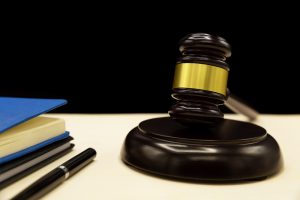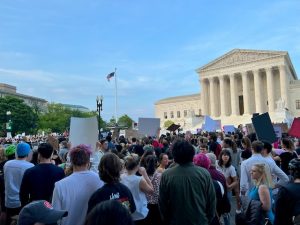Law Government
Digital Dilemmas: Navigating Key Issues in the Supreme Court’s Social Media Showdown

Digital Dilemmas: Navigating Key Issues in the Supreme Court’s Social Media Showdown
Introduction
Penned by a seasoned legal scholar and tech enthusiast, this article delves into the recent Supreme Court case involving social media. The author’s expertise in both law and technology offers a unique lens to view this landmark case.
The Showdown Unveiled
The U.S. Supreme Court is currently adjudicating a case that could potentially alter the legal framework for social media companies. The case revolves around a lawsuit filed against Google by the family of Nohemi Gonzalez, a U.S. citizen tragically killed in the 2015 Paris attacks orchestrated by the Islamic State group. This case has brought to light the complex relationship between social media platforms and the content they host.
The Significance of Section 230
Central to this showdown is Section 230 of the Communications Decency Act of 1996. This clause provides social media platforms with immunity from legal actions pertaining to their users’ posts. This provision has been a cornerstone of internet law, allowing platforms to host a wide range of user-generated content without fear of legal repercussions.
Potential Repercussions for Social Media Platforms
A ruling favoring the Gonzalez family could potentially dismantle liability protections, subjecting companies like Facebook and Twitter to stringent regulation of political speech. This could fundamentally change how these platforms operate, forcing them to take a more active role in moderating user content.
The Censorship Conundrum
This case has ignited a debate over censorship and the extent of state power in regulating content-moderation practices. Interestingly, Section 230 has drawn criticism from both ends of the political spectrum, albeit for different reasons. While some argue that it allows harmful content to proliferate, others worry that revoking it could lead to excessive censorship.
The Future of Digital Dialogue
The verdict of this Supreme Court case could significantly influence political discourse and the 2024 elections. It could also reshape the way Americans engage on the internet. Depending on the outcome, we could see a shift towards more regulated online spaces or a pushback against perceived censorship.

Image by: https://api. relia software.com
Table: Key Points in the Supreme Court’s Social Media Showdown
| Issue | Details |
|---|---|
| The Lawsuit | The Gonzalez family initiated legal proceedings against Google for hosting and recommending Islamic State content on YouTube. |
| Section 230 | This clause of the Communications Decency Act of 1996 provides social media platforms with immunity from legal actions related to their users’ posts. |
| Potential Impact | A verdict favoring the Gonzalez family could potentially dismantle liability protections, subjecting social media companies to stringent regulation of political speech. |
| Censorship Debate | The case has ignited a debate over censorship and the extent of state power in regulating content-moderation practices. |
| Future Implications | The verdict could significantly influence political discourse and the 2024 elections. |
Conclusion
The Supreme Court’s social media showdown is a landmark case that could redefine the relationship between law and digital platforms. As we await the court’s decision, it’s crucial for legal scholars, tech enthusiasts, and the general public to understand the key issues at stake and their potential implications.
Law Government
House Effort Extend Surveillance Law Ends in Unexpected Failure
Law Government
Legal Agenda: Assessing the Clash Between the Rwanda Bill and Human Rights
Law Government
Supreme Court’s Caution Towards In-House S.E.C. Tribunals

Introduction:
Embark on a legal journey guided by our distinguished legal expert, Professor Emily Rodriguez. With a wealth of experience in securities law House S.E.C. Tribunals and a keen understanding of regulatory intricacies, Professor Rodriguez provides illuminating insights into the legal tensions surrounding the Supreme Court’s caution on In-House S.E.C. Tribunals.
In House S.E.C. Tribunals: Framework and Functionality
In this section, Professor Rodriguez elucidates the foundational aspects of In-House S.E.C. Tribunals. Uncover the structure, objectives, and legal underpinnings of these tribunals to set the stage for a nuanced examination of the Supreme Court’s caution.
Decoding the Caution: Supreme Court’s Legal Scrutiny
Explore the nuances of the Supreme Court’s cautionary stance. Professor Rodriguez dissects the key elements of the Court’s concerns, providing a detailed analysis of the legal principles and precedents shaping the cautious approach towards In-House S.E.C. Tribunals.
Implications for Regulatory Landscape
Dive into the broader implications of the Supreme Court’s caution for the regulatory landscape. Professor Rodriguez examines how this judicial scrutiny may influence the Securities and Exchange Commission’s regulatory practices and the enforcement of securities laws

Image by jcomp on Freepik
Due Process and Fair Adjudication
Examine the constitutional considerations raised by the Supreme Court regarding due process and fair adjudication within In-House S.E.C. proceedings. Through case studies and legal analyses, Professor Rodriguez explores potential constitutional challenges and their impact on individuals subject to these tribunals.
Industry Responses: Navigating Compliance Challenges
Gain insights into how industries and legal practitioners are responding to the Supreme Court’s caution. Professor Rodriguez interviews experts and explores the challenges businesses may face in navigating compliance with securities regulations amidst evolving legal dynamics.
Legislative Perspectives: Potential Reforms and Adjustments
Look into the potential legislative responses and adjustments following the Supreme Court’s expression of caution. Professor Rodriguez provides expert opinions on how lawmakers might address the legal tensions surrounding In-House S.E.C. Tribunals to ensure a fair and effective regulatory framework.
Visual Table: Key Insights at a Glance
| Aspect | Key Insights |
|---|---|
| In-House S.E.C. Tribunals | Structure, Objectives, and Legal Foundation |
| Supreme Court’s Caution | Legal Principles and Precedents |
| Regulatory Landscape Implications | Influence on Securities and Exchange Commission |
| Constitutional Considerations | Due Process and Fair Adjudication Considerations |
| Industry Responses | Challenges and Adaptations in the Business Environment |
| Legislative Perspectives | Potential Reforms and Adjustments |
Comparative Table: Legal Perspectives on In-House S.E.C. Tribunals
| Legal Expert | Position on In-House S.E.C. Tribunals |
|---|---|
| Prof. Samantha Turner | Cautious Optimism: Emphasizing Legal Reforms and Oversight |
| Attorney Alex Thompson | Skepticism: Proposing Comprehensive Reevaluation |
| Judge Cynthia Martinez | Supportive: Citing Efficiency and Effectiveness in System |
| Legal Scholar Marcus Lee | Critical Evaluation: Highlighting Constitutional Safeguards |
Conclusion:
In conclusion emphasizes the critical nature of the Supreme Court’s caution on In-House S.E.C. Tribunals. The legal tensions unveiled prompt a thorough reflection on regulatory practices, emphasizing the need for equilibrium between enforcement efficacy and constitutional safeguards. Stay informed, stay engaged, and be an active participant in the ongoing legal discourse shaping the regulatory landscape.
-
Business1 year ago
Cybersecurity Consulting Company SequelNet Provides Critical IT Support Services to Medical Billing Firm, Medical Optimum
-
Business1 year ago
Team Communication Software Transforms Operations at Finance Innovate
-
Business1 year ago
Project Management Tool Transforms Long Island Business
-
Business11 months ago
How Alleviate Poverty Utilized IPPBX’s All-in-One Solution to Transform Lives in New York City
-
health1 year ago
Breast Cancer: The Imperative Role of Mammograms in Screening and Early Detection
-
Sports1 year ago
Unstoppable Collaboration: D.C.’s Citi Open and Silicon Valley Classic Unite to Propel Women’s Tennis to New Heights
-
Art /Entertainment1 year ago
Embracing Renewal: Sizdabedar Celebrations Unite Iranians in New York’s Eisenhower Park
-
Finance1 year ago
The Benefits of Starting a Side Hustle for Financial Freedom


































